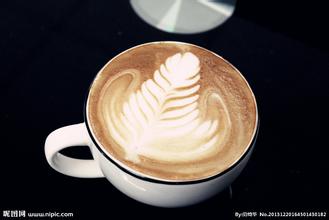Introduction of mild and smooth Brazilian coffee boutique coffee bean flavor manor production area
In the 1630s Portuguese expeditions were sent to establish colonies in Pakistan. The governor was appointed in 1549. Later, the whole colony was unified along the Atlantic coast under Portugal rule. The French invaded in 1555 and occupied what is now Rio de Janeiro, intending to establish a French colonial stronghold in South America. However, since the French were unable to attract colonists from Europe, they were finally expelled from Rio by the Portugal in 1565. Two years later, the Portugal founded Rio. Portugal sovereignty over Brazil was not challenged again until 1630.
Napoleon invaded Portugal in 1807 and the Portuguese royal family moved to Brazil. In 1820, the Portuguese royal family moved back to Lisbon, and Prince Pedro remained as regent. On September 7, 1822, it declared complete independence from Portugal and established the Brazilian Empire. He was crowned emperor and called Pedro I. In 1824 Brazil promulgated the Constitution. In 1825, Portugal recognized Brazil's independence.
During the imperial period (1822~1889), after the establishment of the Brazilian Empire, the Braganza Dynasty system and Portugal aristocratic power remained intact, the large manor system and slavery still existed, and Brazil was economically and politically dependent on Britain. Pedro I ruled despotically, forcibly dissolving Parliament in 1823 and then suppressing republican revolts in the northeastern provinces of Pernambuco by force.
On November 15, 1889, General Fonseca launched a coup d'état to overthrow the monarchy and establish the United States of Brazil. Under the slogan of "order and progress," the new government strengthened Brazil's modernization on the basis of a presidential system, producing three-quarters of the world's coffee and creating economic success. Later, in the Great Panic of the 1930s, the coffee economy suffered a painful blow, and the subsequent coups, dictatorships, and constitutional monarchies plunged politics into chaos.
Brazil is known as the kingdom of coffee. It is the largest coffee producer and exporter in the world. The coffee output value monopolizes more than 30% of the world. One sixth of the world's coffee is produced here. Brazil is also the second largest coffee consumer in the world after the United States. There are about 300,000 farmers engaged in coffee cultivation here. It bears the heavy responsibility of Brazil's economic development and also affects the development of international coffee. To know that the vast majority of instant coffee is Brazilian coffee as the main raw material, although Brazilian coffee annual output value of 30% to 35%, accounting for the first place in the world, but unfortunately no Brazilian beans can be called sophisticated coffee. Coffee trees grow all over the mountains, in southern Brazil. Compared with the elevation of other coffee-producing countries in Central and South America, Brazil is significantly lower, with farms mostly around 600 - 1000 meters above sea level, and even the three major boutique producing areas of Minas del Sur, Serrado and Mojiana rarely exceed 1300 meters. Brazil's terrain is too flat and monotonous for coffee cultivation. It lacks a microclimate that can give coffee rich taste factors. Therefore, compared with Kadura, New International and Kaduai Brazil coffee, which are suitable for growing without shade, there are many kinds of coffee. It is difficult to say what special flavor it has. There are no outstanding advantages and no significant disadvantages. Most of them are medium acid and smooth taste. The main ones are mild and smooth, good body and sweet feeling. Its softness allows it to mix with other coffee beans without much change in taste; and the oil contrast is rich. Brazilian coffee beans are best blended with other coffee beans to make espresso coffee. They form a golden foam on the surface of espresso coffee and give coffee a slightly sour taste and a long aftertaste. In fact, all the big coffee roasters have some bird shit coffee from Brazil in their coffee blends. Although Brazil is one of the most abundant countries in the world in terms of fresh water resources, its water resources are unevenly distributed, and many regions rely on natural draft. Especially in the eastern part of coffee cultivation, severe drought often occurs, scarce water resources limit the way coffee is processed, Brazil in 1990 before the use of rough sun method, quality difference is very large, because bird droppings coffee fruit in the process of exposure for two to three weeks, rain moisture or fruit cracking, will mold, odor. This also makes Brazilian beans synonymous with medium to low quality. As the world's largest coffee producer, how can we be willing to get such a reputation? In order to improve the quality and reverse the image, Brazil carried out a quality revolution in the 1990s and vigorously promoted the unique semi-sun method in the world.
Brazil's research unit developed a semi-solarization method to shorten the treatment time, based on the monotonous nature of Brazil's climate. After removing the pulp, the pods covered with pectin layer are exposed to the sun for one to three days, and then dried by machine to a moisture content of 12%, which can be put into storage containers. Brazil's semi-sun method significantly reduces the processing time (traditional sun method takes two to three weeks), also reduces the chance of coffee beans to get peculiar smell, and the quality is greatly improved. In addition, the semi-sun method also inherits the advantages of the sun method to improve sweetness, but it lacks the earthy taste that is not flattering, and enhances the fruity and sweet feeling. It is most suitable for single products. Therefore, the semi-sun method has become a necessary "outfit" for Brazilian fine beans, winning praise from international coffee experts.

Important Notice :
前街咖啡 FrontStreet Coffee has moved to new addredd:
FrontStreet Coffee Address: 315,Donghua East Road,GuangZhou
Tel:020 38364473
- Prev

Introduction to Nicaraguan Coffee Flavor Manor with rich aroma, smooth and meticulous taste
Columbus arrived here in 1502 and reached the east coast of Nicaragua. In 1522, Spanish colonists began to conquer the region. The cities of Granada and Leon were founded in 1524. From then on, Nicaragua became a Spanish colony and came under the jurisdiction of the Governor's Office of Guatemala. The city of Leon developed into a political and cultural center; Granada became a commercial and agricultural center. In the later period of colonial rule
- Next

An introduction to the flavor and taste of Kenyan boutique coffee with endless aftertaste
Kenya is bordered to the north by Ethiopia, the origin of Arabica coffee trees, but it was not until the beginning of the 20th century that coffee cultivation began. In the 19th century, missionaries introduced Arabica trees from the leaves, but did not plant them in large quantities. It was not until 1893 that coffee was cultivated on a large scale because of the introduction of Brazil's ancient bourbon seeds. That is to say, Kenyan coffee is of Brazilian origin, because of water.
Related
- Detailed explanation of Jadeite planting Land in Panamanian Jadeite Manor introduction to the grading system of Jadeite competitive bidding, Red bid, Green bid and Rose Summer
- Story of Coffee planting in Brenka region of Costa Rica Stonehenge Manor anaerobic heavy honey treatment of flavor mouth
- What's on the barrel of Blue Mountain Coffee beans?
- Can American coffee also pull flowers? How to use hot American style to pull out a good-looking pattern?
- Can you make a cold extract with coffee beans? What is the right proportion for cold-extracted coffee formula?
- Indonesian PWN Gold Mandrine Coffee Origin Features Flavor How to Chong? Mandolin coffee is American.
- A brief introduction to the flavor characteristics of Brazilian yellow bourbon coffee beans
- What is the effect of different water quality on the flavor of cold-extracted coffee? What kind of water is best for brewing coffee?
- Why do you think of Rose Summer whenever you mention Panamanian coffee?
- Introduction to the characteristics of authentic blue mountain coffee bean producing areas? What is the CIB Coffee Authority in Jamaica?

